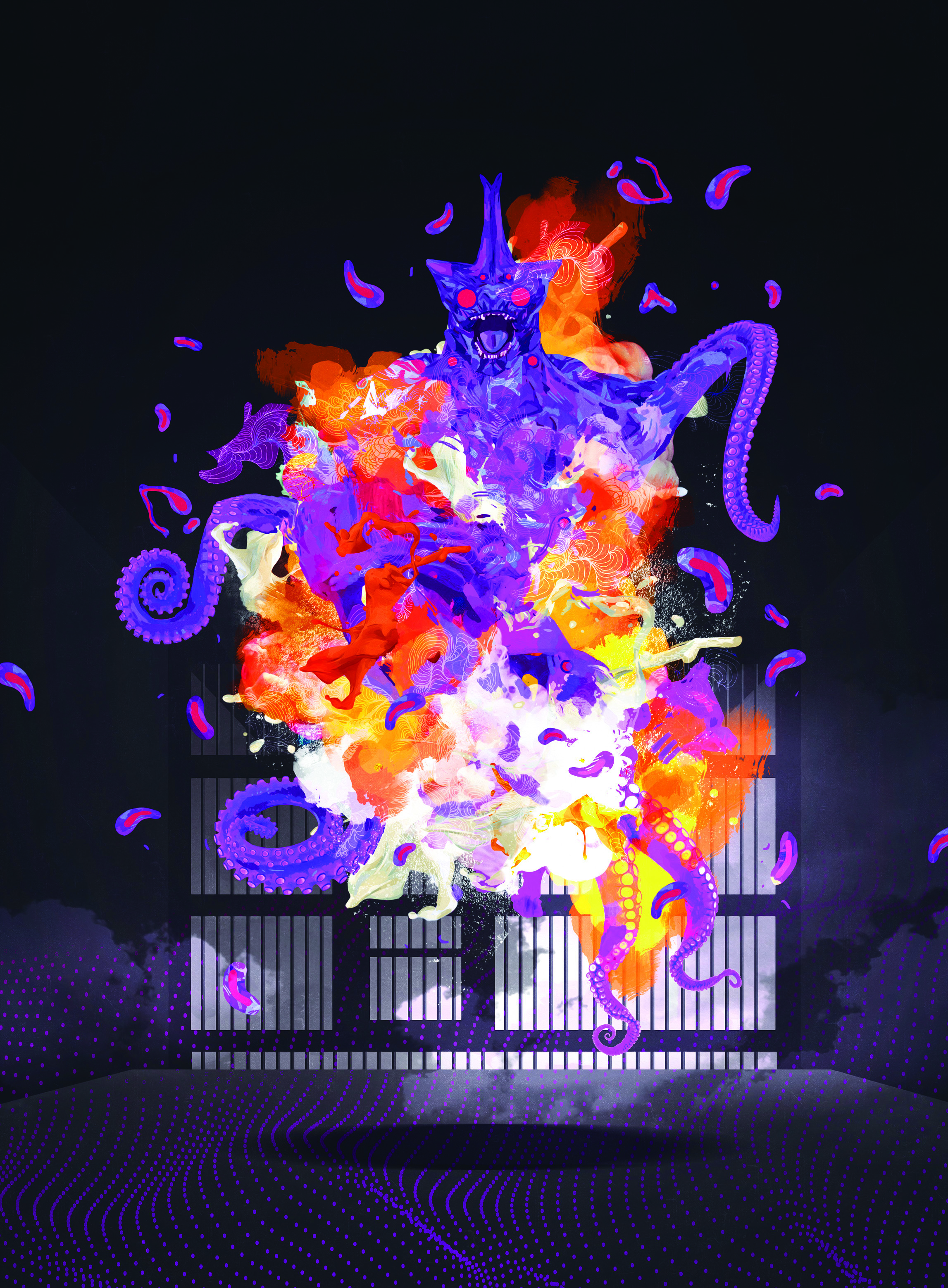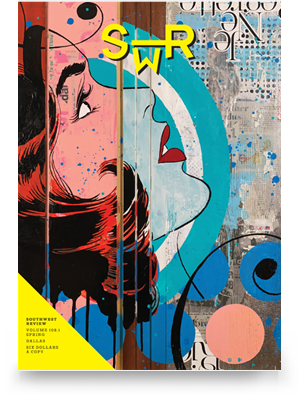
“We need the monsters’ art,” he said, and produced an official document mandating as much.
The bailiff swept his eyes slowly over the document, as though assessing its gravity, but he wasn’t assessing it, just giving the impression of doing so.
“Of course,” he said. And turned.
He pushed open the wooden door now in front of him and walked into the next room, showed the document to the secretary, who solemnly swept his eyes over it and nodded, then walked to the back of the room, turned the knob of the second door, which was plastic. In the next room was nothing but a desk with a single drawer. He opened the drawer and extracted a ring of three keys, used one to open the next door, the aluminum door, and walked into the next room. Nothing in it, just silvery metal walls. He used the two remaining keys to open the next door, which had an oak finish but a soul of steel, and entered the last room. This one was also all metal but littler than the others. The ceiling was a single square bulb, which illuminated one shelf holding bottles and another shelf on which lay a blunt-tipped cane and a box containing rolls of paper of various textures; on the floor was a square black device with a cord, also black. He placed one bottle, the cane, and a roll of paper on top of the apparatus and pushed the whole of it to the next door, which resembled that of a safe. The bailiff spun the dial on the combination lock this way, then that, then this again, this again, this, that, spanning the segments of each revolution with expertise, tempo, and determination until the lock went click. Then he pulled the titanium-handled hatch and entered the monsters’ room.
By the entrance, hanging from a nail, was a clipboard with a paper with squares to be ticked off. The bailiff made three ticks on as many lines, turned, took the cane, turned the handle, and entered the first monster’s dungeon. He caught the monster making art. Banging and banging its hairy fists against a sheet of sepia paper that had been marked up in distressing fashion on the concrete floor. Catching the monster making art was extremely difficult, as the monster was timid, but it didn’t mind being seen making monstrosities, for which they provided all required supplies. There was no one left in the dungeon, just shreds of clothing and shards of bone; maybe that was why, with no one to manhandle, it had begun making art.
The monster turned to the bailiff, stunned and slobber-mouthed, and tensed its muscles, preparing to pounce and tear him to pieces, but by then the bailiff was wielding the cane and whacked it down on the monster’s back until he felt it go soft and then on the monster’s skull until he felt it go soft and then on the monster’s extremities until he felt them rendered useless and only then did he approach to examine the art on the floor; fortunately, the art had been spattered with blood. He picked it up, left another piece of paper in its place, and walked out.
The bailiff slid the monster’s art into a cardboard tube, tucked the bottle into the waistband of his trousers, and moved on to dungeon number two. The monster in this dungeon was expecting him. It was curled up in a corner, hurling a litany of hatred with its gaze, almost as if speaking with its eyes. The litany grew louder and louder and the monster began unfurling from the corner toward the bailiff, as though its bones were slow springs, and brought its nose right up to the bailiff’s, a nothing away. The bailiff was frightened but remembered his training: he must not let himself be intimidated by the litany or by the monster’s unfolding bones, so he brandished the cane and crashed it down, shattering an eye socket. No problem; they healed. Then he shattered its mouth, and once the monster had curled back up, he pushed it in order to collect what the monster was hiding, but the monster turned its back on the bailiff and held on, refusing to let go, so the bailiff began striking its claws until it finally let go and the bailiff was able to pick up the bundle, which was a doll representing something, a girl or a cat, something with huge smiley eyes. He took the bottle from his trousers, opened it, sprayed firewater onto the monster’s wounds, and then threw it the bottle, which the monster rushed to pick up and bring to its mouth.
He placed the doll and the tube by the door to the monsters’ ward, hooked up the square contraption, and nudged it along. Before entering the third dungeon, he turned the thing on and a series of lights on the rim of the box blinked. He bent over it, pressed a concealed button on the top, and said, “Testing, testing,” pressed another button and heard himself speak, and nodded in satisfaction. As soon as the bailiff stepped into the dungeon, the monster began to wail. The bailiff carried the box in with him and the monster’s wails became more desperate. It was small and misshapen, with some extremities shorter than others. The monster used them all to bury its nails into its skin and injure itself and began to expel various secretions—brown, yellow—from its orifices.
“No, no, stop that,” said the bailiff, attempting to approach the monster, the cane in one hand, pushing the black box with the other. “Don’t do that.”
But the monster wouldn’t stop spraying him with its nauseating secretions. It was no longer making any sound and instead was focused on making more and more pus-secreting wounds, until the bailiff began to strike strategic blows with the cane, first on its extremities, and then, since the monster only moaned crossly, on its chest and genitals. Then the monster really did let out a sound that was first deep and low, then sweet and almost sharp, and all the while blue. The bailiff pressed the button on the box and, when he noticed that it had stopped singing, struck the monster again and it sang again, in great pain and in a great range of keys; at one point the bailiff even began tapping his foot in time, until the monster seemed to falter irremediably and stop secreting and stop singing and turned into a useless blob.
The bailiff exited the dungeon, put the other pieces of art atop the recording box and exited the monsters’ ward.
He went back through the shock-absorbing rooms, making sure to lock each one carefully. In the penultimate room, the secretary made note of the art he was removing before finally returning to reception.
The messenger waited in mute impatience. He made no gesture or comment about the filth covering the bailiff. He took the monsters’ art, turned, and walked off.
The bailiff looked down to record the removal in the day’s logbook before going off to change. As he did so he began biting a nail and, without realizing it, kept going until he noticed he was gnawing the bone. He stood staring at the naked tip of his phalanx and only then did he feel a stab of pain, though flesh was already beginning to cover the bone once more. The bailiff began to cry. Not because it hurt but because of all the times he’d eaten his own flesh and told himself that he too had what it took to make art. ![]()
Born in Actopan, Mexico, Yuri Herrera is the author of three novels, including Signs Preceding the End of the World, which was one of the Guardian’s “100 Best Books of the 21st Century” and won the 2016 Best Translated Book Award. He teaches at Tulane University in New Orleans.
Lisa Dillman lives in Decatur, Georgia, where she translates Spanish-language fiction and teaches at Emory University. Her recent translations include National Book Award finalist The Bitch by Pilar Quintana and A Silent Fury: The El Bordo Mine Fire by Yuri Herrera.
“The Monsters’ Art” is taken from Ten Planets, which will be published by Graywolf Press in March 2023.
Illustration: Vicente Martí Solar


